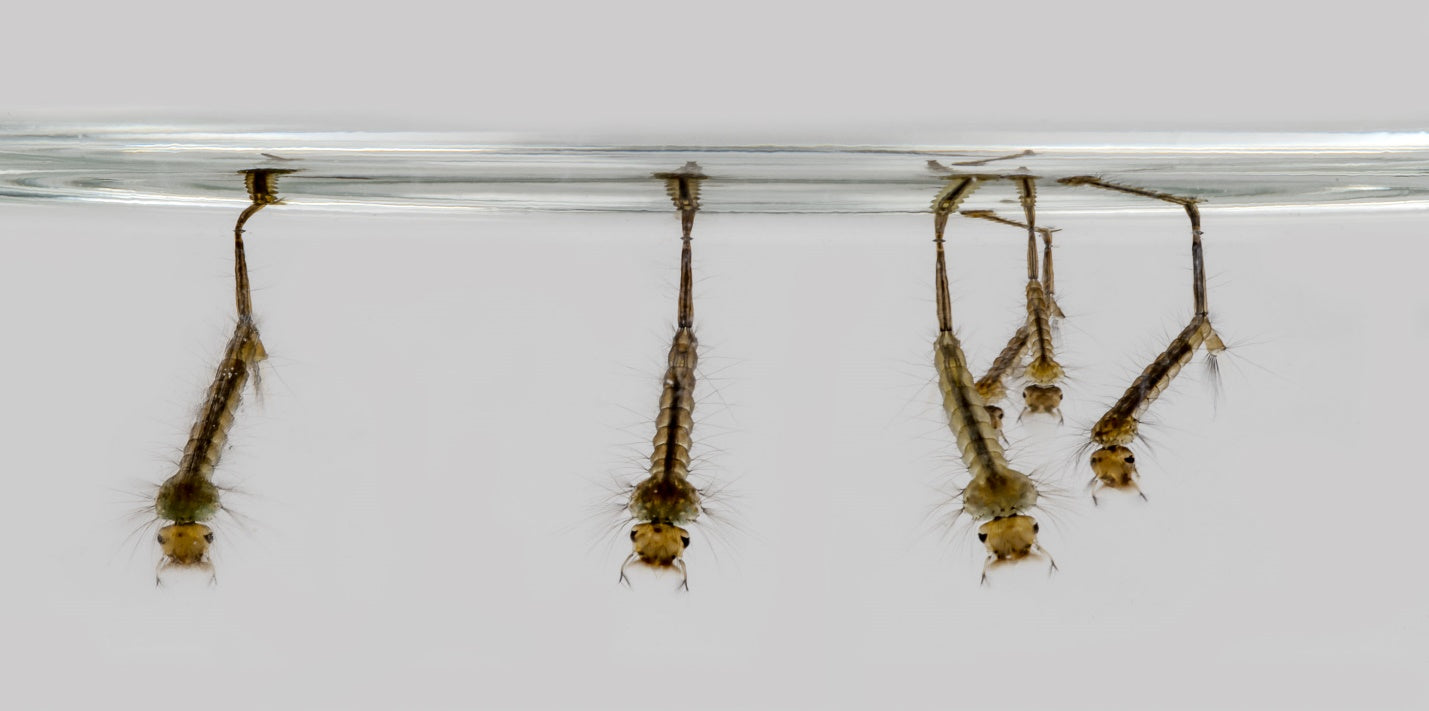
Mosquitos are the bane of many people's existence, especially since their bites aren't just annoyingly itchy; they can also spread potentially deadly parasitic diseases. Even the larvae of certain species can be formidable. While most mosquito larvae feed on algae or bacteria and similar microorganisms, some predatory species feed on other insects—including the larvae of other mosquitos. A team of scientists has captured the unique attack methods of these cannibalistic predators on high-speed video, revealing how they capture their prey with lightning-fast strikes, according to a recent study published in the journal Annals of the Entomological Society of America.
Co-author Robert Hancock, a biologist at the Metropolitan State University of Denver, became fascinated by predatory mosquito larvae when he first watched them strike their prey under a microscope during an undergraduate entomology class in college. He was impressed by the sheer speed of the attacks: "The only thing we saw was a blur of action," he recalled. Scientists have long studied these larvae because they are so efficient at controlling the populations of other mosquito species. Just one predatory larva can devour as many as 5,000 prey larvae before reaching adulthood.
Hancock first attempted to capture the striking behavior of the larvae on 16-millimeter film by jerry-rigging a setup with a microscope and camera back in the 1990s—a process he said resulted in a lot of wasted film, given the blistering speed of the strikes. Now as a college professor, he was able to exploit all the advances in video and microscope technology that have been made since his undergraduate years to learn more about the biomechanics involved.
A Psorophora ciliata larva strikes a prey larva via a sudden neck extension to launch its head away from its body and toward the prey. (R.G. Hancock et al., 2022)
Hancock and his co-authors focused on three species of mosquito larvae for their experiments. Toxorhynchites amboinensis is native to Southeast Asia and Oceania; the lab obtained adults from Ohio State University and collected instars weekly from special black plastic cups for laying eggs. Psorophora ciliata larvae were collected from shallow irrigation ditches in the citrus groves of River County, Florida. And samples of Sabethes cyaneus came from a colony first established in 1988 at OSU, with adults and larvae collected from Maje Island in Panama.
The researchers induced strikes by placing the predatory larvae into well slides with water, and then presenting live prey larvae with a jeweler's forceps. The striking behavior was captured on video using high-speed microcinematography. They used heat-protective filters for the hot and bright illuminating lights under the microscope since, otherwise, the heat would have cooked the living larvae. Even the researchers donned dark sunglasses for protection. Finally, they analyzed the resulting videos to glean insight into the larval anatomy and the sequence of motions involved in their strikes.
A Sabethes cyaneus larva attacks a prey larva by using its tail to sweep the prey toward its head. (R.G. Hancock et al., 2022)
Both Tx. amboinensis and Ps. ciliata are what's known as "obligate" predators, meaning that they need to consume the larvae of other insects. "Despite their different relatedness in different tribes of the Culicidae and dissimilar life histories, the obligate predators Tx. amboinensis and Ps. ciliata have apparently converged on a similar mechanical strategy for preying on mosquito larvae," the authors wrote. This involves suddenly extending the neck to launch the head toward its prey, much like a harpoon—motion that seems to be generated by releasing built-up pressure in the predatory larva's abdomen. At the same time, the jaws open, snapping shut upon impact to capture the prey.
Sabethes is a "facultative" predator that only sometimes feeds on other larvae; they can also subsist on microorganisms and hence have evolved a markedly different strategy for capturing prey. There is no harpoon-like launching of the head. Instead, Sabethes larvae use their tails—known as siphons, since they also function as breathing tubes for the larvae—to sweep prey into their mandibles.
The strikes of all three species studied in the experiments took 15 milliseconds. According to Hancock, that time scale indicates the behavior is almost reflexive in nature, likening the strikes to the act of swallowing, which involves coordinating several small muscles. "All of this stuff has to work in concert—we all do it so automatically," he said. "And that's exactly what these mosquito larvae strikes have to be. It's a package deal."
DOI: Annals of the Entomological Society of America, 2022. 10.1093/aesa/saac017 (About DOIs).



3175x175(CURRENT).thumb.jpg.b05acc060982b36f5891ba728e6d953c.jpg)

Recommended Comments
There are no comments to display.
Join the conversation
You can post now and register later. If you have an account, sign in now to post with your account.
Note: Your post will require moderator approval before it will be visible.